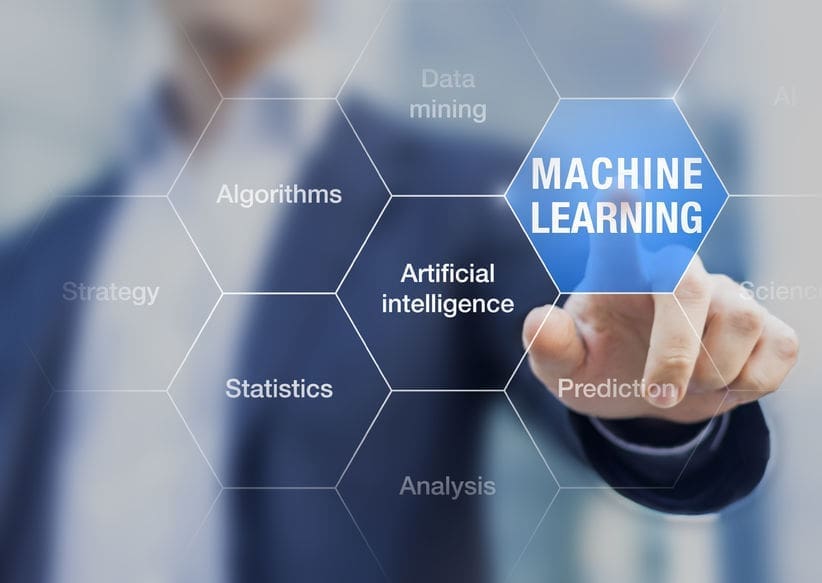We all likely remember when supply chain visibility first revolutionized the commodity management industry. We saw early adopters and visionaries experience unprecedented growth, as they now had access to a game-changing technology that optimized their supply chains for the very first time.
Now, there are two new technologies primed to change the commodity management game again. Artificial intelligence (AI) and machine learning (ML) are set to usher in a new era of commodity management for organizations that are willing to innovate.
Energy and commodity companies have always generated massive quantities of data, yet more often than not, these organizations barely scratch the surface of how they can utilize that data. AI and ML offer the potential to push valuable information throughout commodity businesses with high efficiency and value.
Crude oil marketers and traders, in particular, stand to gain a significant competitive advantage with AI and ML. In this article, I’ll talk about five practical applications of AI and ML for crude oil marketers and three challenges that early adopters and visionaries face. But first, let’s get crystal clear about where AI and ML sit in today’s commodity management market.
The Bellwether
The financial market is well-known to be the technological bellwether that the energy and commodity markets follow. Because of this direct correlation, we can look to fintech as a likely predictor of trends our own industry will adopt in the near future.
While financial firms have embraced AI and ML to automate critical business functions like fraud detection and anti-laundering efforts, AI’s next frontier in fintech is tackling more complex activities like trading, portfolio management, and personalized services. Additional initiatives include forecasting prices, interest rates, inflation, or even GDP.
However, the adoption of AI in fintech isn’t without its challenges. Skepticism related to data security and the efficacy of AI’s decision-making capabilities will be tricky, but not impossible to overcome. Already taking strides to combat these concerns, fintech companies are at the forefront of training AI to recognize patterns and make sound decisions in order to not only build a strong foundation but to also build industry-wide trust.
The steps the fintech industry is taking today are paving the way for sophisticated AI capabilities to consistently and accurately forecast stock prices and ultimately usher in a new age of fintech. And the commodities industry isn’t far behind.
Practical Uses for AI and ML in Crude Oil Marketing
AI and ML have already started changing the game for early adopter commodity organizations looking to innovate. When companies invest in advanced analytics to gather and interpret data, they open themselves up to growth and improvement in both the short and long terms with artificial intelligence and machine learning.
Here are five ways AI and ML benefit the crude oil marketing industry:
Use No. 1: Forecasting Price
As financial companies become more successful with time-proven algorithms for forecasting pricing, oil marketers are now adopting forecasting algorithms for crude products. Machine learning is ideally suited for forecasting prices over a horizon of a year or even multiple years. Where humans need to aggregate research, market sentiment, and historical data to form a prediction, AI is able to perform this function much quicker and more accurately. Further, programmers have the ability to train and test to learn from past mistakes and increase accuracy over time.
For oil products, forecasting requires combining historical data, today’s market positions, and relevant forecasting components like geopolitical factors and running these variables through neural networks built to consider the forward curve and economic rules of the crude oil industry. This data can be used to evaluate the spread between gasoline and crude oil to determine the ideal barrels to produce and how to price them.
Use No. 2: Forecasting Risk or Risk Management
In some commodity organizations, machine learning neural networks have started to supplant or complement the time-consuming calculations required to estimate the risk of a portfolio based on overall positions. In crude oil, estimating VaR for a broad portfolio with thousands of positions can take multiple hours, but machine learning can quickly produce a snapshot of the portfolio’s overall risk. Ultimately, this saves risk managers time and allows them to focus on additional strategic initiatives for their organizations.
Use No. 3: Valuation of Derivatives or Assets
As AI and ML prove sustained success in forecasting price and risk, the industry is already starting to embrace additional opportunities like valuation of derivatives or assets. However, the valuation of derivatives does present challenges.
Where forecasting price and risk mostly rely on immense amounts of industry-wide data to calibrate neural networks and algorithms, pricing derivatives relies on data singularly available to individual organizations — mainly because that data is proprietary and unique. It is possible, though, for organizations to build and train unique machine learning algorithms capable of providing valuation for their own physical transactions. However, this requires a team or experienced outside vendor to build, train, and test algorithms unique to individual organizations.
As this application of AI demonstrates long-term success, we may even see the valuation of other derivatives in the market like options on crude oil with a machine learning algorithm forecasting the volatility.
Use No. 4: Regulatory Compliance and Data Integrity
AI and ML have the ability to boost back-office efforts to ensure regulatory compliance by recognizing fraud, abuse, and mistakes. In the case of potential fraud or abuse, ML can perform ongoing checks for intentional interference with data integrity. This enables organizations to protect their assets by keeping up with potential market abuse pattern identification. Today, large banking institutions rely on self-teaching AI to monitor and process billions of transactions while searching for patterns indicative of fraud and abuse like insider trading, stock manipulation, or other unauthorized actions. Similar functions in commodity marketing allow AI to detect abuse in crude oil marketing or trading.
Even in the case of unintentional errors, the back office can employ ML to track and validate numbers for data integrity and regression testing. When employees make changes to code or algorithms, programmers are able to make sure the changes are not deviating against known values. AI also has the capability to reduce human error by aggregating data on its own without human interference.
Use No. 5: Data Protection
Like in the financial sector, AI and ML also have the capability to enhance an organization’s processes and protect its data at a higher level. As organizations grow and become more digitally focused, the sheer amount of data, both public and private, can become overwhelming. AI and ML can offer new, effective forms of security to prevent this data from potential risks. By continuously analyzing large quantities of data for anomalies, AI can identify threats, alert relevant parties, and provide actionable intelligence.
In the same vein, AI’s ability to continuously monitor, collect, and analyze data allows for algorithms that can identify structural inefficiencies that could lead to system failures before they happen — reducing system blackouts and safeguarding customer trust.
Challenges to Industry-Wide Adoption of AI and ML
While AI and ML present numerous opportunities to advance efficiency in oil marketing, the commodity management industry is still in the beginning stages of adopting these technologies, and significant challenges and roadblocks remain before the industry will see widespread adoption.
The first and perhaps most challenging obstacle is that the value of artificial intelligence compounds over time, which is a luxury only early adopters, visionaries, and innovators are typically comfortable with. Before the mainstream commodity industry adopts AI, there are still many simple calculations and algorithms to be tested and tuned over time.
Many organizations talk about the possibilities, but the industry needs visionary leaders willing to invest time into perfecting calculations to run front office activities like oil marketing successfully.
Skepticism is another challenge organizations looking to adopt AI and ML must overcome. Ultimately, embracing AI and ML will be a transformational, paradigm-shifting move that will require substantial organizational buy-in following extensive proof of concept. Even then, the mere existence of such technology does not mean it will conclusively be adopted.
To counteract naysayers with a measured approach, industry leaders can take incremental steps to lay a foundation of trust by incorporating simple machine learning into everyday processes. By proving value and accuracy over time, the necessary comfort and trust of these new technologies and their possibilities will grow.
Another significant challenge AI and ML innovators face is resistance to automation. Understandably, some marketers are nervous about what automation means for their jobs. The truth is, when applied correctly, AI and ML should complement and amplify the skills of industry workers and empower them to add greater strategic value throughout their organization.
Incorporating AI and ML Into Your Crude Oil Business
Commodity organizations are just now beginning to explore the possibilities AI and ML offer their businesses. Alone, this can be a daunting task, but the value of AI and ML compounds over time, driving tremendous growth for organizations with each instance. That’s why industry visionaries are turning to the leaders in advanced commodity analytics to lay a technological foundation that embraces ML today to support more significant AI initiatives in the future. Those with the headstart will have the competitive advantage over the mainstream laggards.
That’s why ION FEA and ION Commodities are at the forefront of advanced commodity analytics. We’re dedicated to solving these problems for commodity organizations and laying the necessary framework by building analytics capable of powering AI and ML initiatives, so that forward-looking organizations can learn from their data, identify patterns, and make decisions with minimal intervention.
Technology cycles and opportunities like this don’t come around every day. The question is: Which side of the AI and ML adoption chasm will you find yourself on?
Josh Gray is the Chief Scientist for ION FEA at ION Commodities. At ION Commodities, Gray manages the ION FEA research teams, who control a broad range of analytic and risk management tools.With more than 15 years of energy trading and quantitative risk management experience, one of Gray’s chief initiatives is recognizing new market trends and identifying needs for the development of new ION FEA software features, models, and/or contract specifications. Gray received a Doctorate in Theoretical Physics from the University of California, Santa Cruz in 2001.






